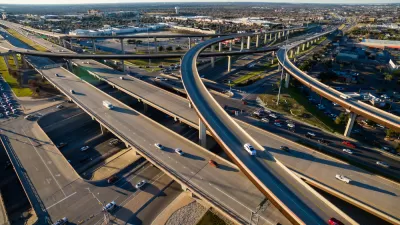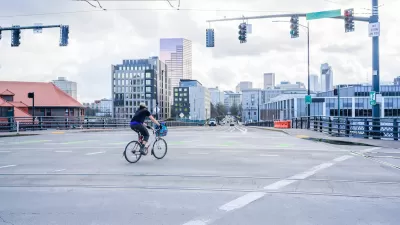Pedal Fort Collins explains the math used to calculate the impacts of various sized vehicles on the roads they travel.

Meg Dunn explains how civil engineers calculate the wear and tear of vehicles on the roadway. "Roads need to be maintained. But some vehicles cause more wear and tear than others, requiring additional maintenance," explains Dunn to set the stage for the discussion.
Dunn lays out the complex set of factors that can influence the state of street surfaces, such as construction materials, vehicle frequencies, vehicle weight, and vehicle speed. When comparing the impacts of various types of vehicles, Dunn suggests the Generalized Fourth Power Law, "which is a rule-of-thumb way to determine the level of damage caused by a particular load" and offers "some sense of how all of the different vehicles on the road compare in terms of how much damage they do to the surface of the street."
Dunn then breaks down the impacts of a sample of vehicle types on roads—everything from a nine-ton big rig to a Toyota Highlander to a Smart Car. Among Dunn's findings: "It would take 410 average sized cars traveling on a road to equal the level of damage caused by one 18,000 pound big rig truck. But it only takes 21 average cars to cause the level of damage created by a single hummer."
The agenda behind the post, however, is to point out the small amount of impact on streets perpetrated by people on bikes. After laying out the math for the impact of bikes, Dunn produces the following assessment: "every time you leave your car at home and take your bicycle out instead, you’re saving the City, and yourself, a car-load of money."
FULL STORY: Which road users make the greatest demands on our tax dollars?

Alabama: Trump Terminates Settlements for Black Communities Harmed By Raw Sewage
Trump deemed the landmark civil rights agreement “illegal DEI and environmental justice policy.”

Planetizen Federal Action Tracker
A weekly monitor of how Trump’s orders and actions are impacting planners and planning in America.

The 120 Year Old Tiny Home Villages That Sheltered San Francisco’s Earthquake Refugees
More than a century ago, San Francisco mobilized to house thousands of residents displaced by the 1906 earthquake. Could their strategy offer a model for the present?

In Both Crashes and Crime, Public Transportation is Far Safer than Driving
Contrary to popular assumptions, public transportation has far lower crash and crime rates than automobile travel. For safer communities, improve and encourage transit travel.

Report: Zoning Reforms Should Complement Nashville’s Ambitious Transit Plan
Without reform, restrictive zoning codes will limit the impact of the city’s planned transit expansion and could exclude some of the residents who depend on transit the most.

Judge Orders Release of Frozen IRA, IIJA Funding
The decision is a victory for environmental groups who charged that freezing funds for critical infrastructure and disaster response programs caused “real and irreparable harm” to communities.
Urban Design for Planners 1: Software Tools
This six-course series explores essential urban design concepts using open source software and equips planners with the tools they need to participate fully in the urban design process.
Planning for Universal Design
Learn the tools for implementing Universal Design in planning regulations.
Clanton & Associates, Inc.
Jessamine County Fiscal Court
Institute for Housing and Urban Development Studies (IHS)
City of Grandview
Harvard GSD Executive Education
Toledo-Lucas County Plan Commissions
Salt Lake City
NYU Wagner Graduate School of Public Service





























